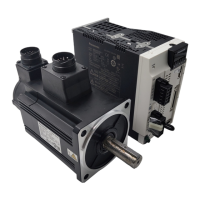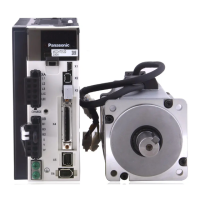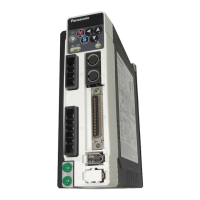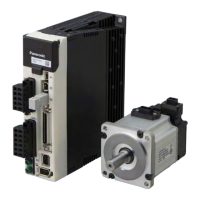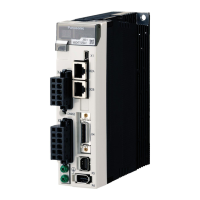2.1I/O connector input signal
2-3
Connector
pin No.
(Note 2)
(Note 4)
These signals are used for
touch-probe function or homing
function.
This input can only be set to
a-contact.
The signal width should be 1 ms or
longer then at the time of closing,
and should be 2 ms or longer then at
the time of opening.
It cannot guarantee this value.
EXT1 for Axis A can only be
assigned to SI5 and EXT2 to SI6,
and EXT1 of Axis B to SI1 and EXT2
to SI2.
General purpose
monitor input 1
Used as the general purpose
monitor input.
This input does not affect the
operation, and can be used for
monitoring through,
Logical input signal
[expansion portion]
General purpose
monitor input 2
General purpose
monitor input 3
General purpose
monitor input 4
General purpose
monitor input 5
External alarm
clear input
Dis arm inputs the alarm.
There are alarms that cannot be
disarmed by this input.
Dynamic brake
(DB) switching
input
Switches the dynamic brake (DB)
ON/OFF after stop (when the main
power is off).
Switching is only possible when
main power supply off is detected.
For details, refer to "6.3.3 Sequence at
main power OFF"
(Note 1) General purpose monitor input can be used for monitoring, but does not affect driver module operations.
(Note 2) Except for I-COM, input signal pin assignment can be changed. The pins in “Connector pin No.” column in the table denote
factory default settings. The signal with a pin that is marked with “*” is not assigned by default.
For more information, refer to “2.4.1 Input signal allocation”.
(Note 3) It is possible to monitor the condition of the signals where “✔” is attached to the EtherCAT communication monitor on the table
with 2321h/2721h (Logical input signal), 2323h/2723h (Logical input signal [expansion portion]), 60FDh/68FDh (Digital inputs).
(Note 4) [A or B] in "Connector pin No." column in the table indicates that this signal is accepted by both Axis A and Axis B.
For details, refer to section "2.4.1 Input signal allocation".
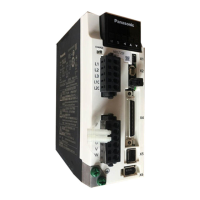
